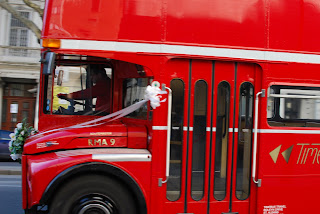 |
| France and Germany - moving towards both politcal and copyright law unity [I've run out of red bus photos] |
Subsistence
France follows a fairly similar approach to the UK. A photograph attracts copyright protection if it is original and carries the “imprint of the personality” of its author. What this means in practice largely accords with the principles applied in Temple Island i.e. the court will look at a combination of the exposure, lighting, composition etc to determine whether a work is original.
By contrast Germany has a two-tier approach to photographic protection. A mere “photograph” i.e. any old photo with no creativity or artistic quality is treated as a “relative right” and protected for 50 years from the date of publication. The title of “photographic work” is awarded to “personal intellectual creations” which are similar to the French original photographs (angle, focus, colour etc are all important in this assessment).
Whilst Brigitte considered that the Claimant’s red bus photo would be protected as a photographic work in both France and Germany, she noted that it would definitely have been protected in Germany as a photograph at the very least. [Or would it, if the heavily manipulated image was arguably a collage?].
Infringement
France has only one very broad test for infringement which includes making adaptations and is general enough to encompass not just unchanged copying but cases where “characteristic and original elements” have been taken.
Germany has two types of infringement (1) reproduction – which covers unchanged copying and (2) adaptation – which covers alterations of an existing work.
A defence of “free use”?
Although Brigitte considered that the defendant’s images would have infringed in both France and Germany, she considered the potential for the Germany “free use” defence to apply.
Not to be confused with “fair use” (US) or “fair dealing” (UK), free use is essentially a freedom of expression defence. In order to qualify for the defence the new work must be so separate from the original that the first work “fades” in comparison. [This surely incorporates a judicial assessment of aesthetic quality]. Birgitte considered that the defendant would have needed to move further away in order to qualify for this sort of protection and could not rely on the defence in Germany.
Does anyone have experience of French or German law and can offer an insight into how this approach to photographic subsistence and infringement applies in practice? I noted a recent case in France (reported by TechDirt and the BJP) where the Le Corbusier Foundation appears to have successfully sued Getty for stocking some photographs of Le Corbusier chairs without its permission. Any information on that case would be of particular interest.








